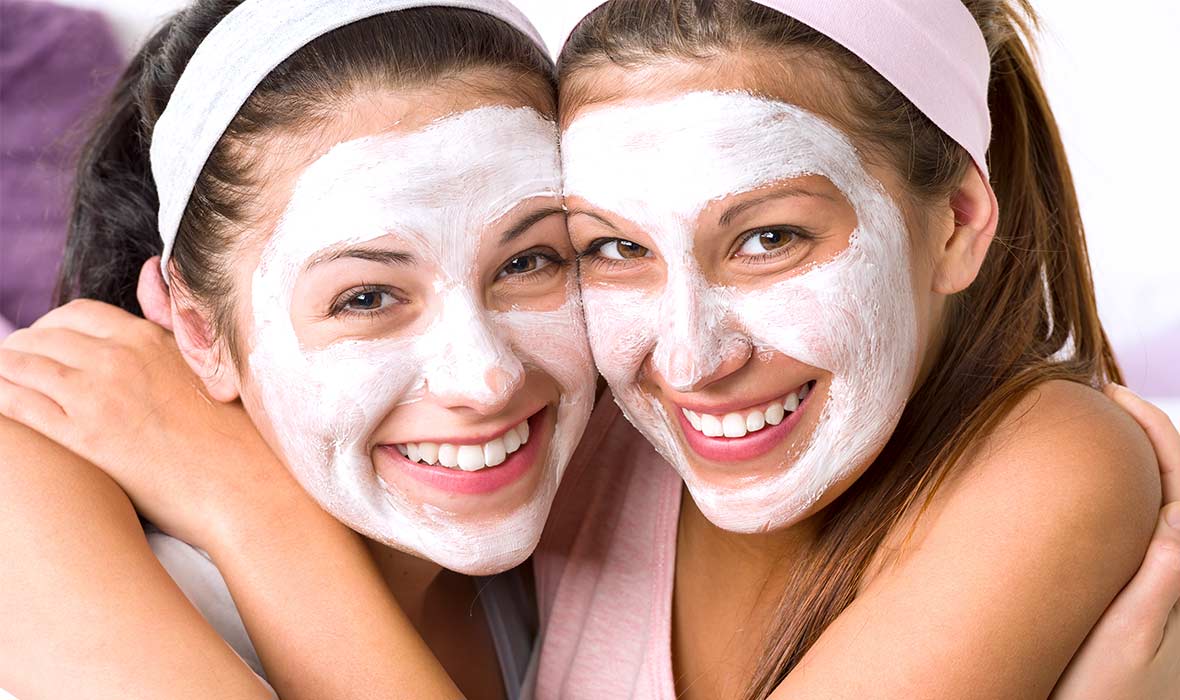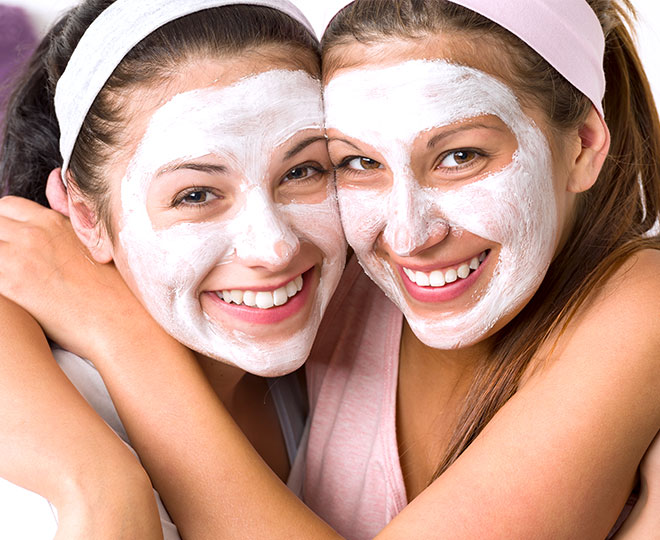As fun as they are, teenage years can come with a variety of skin problems. From shiny skin to, you guessed it, acne – most teens are affected by at least one of these skin conditions. An estimated 85 percent of teens get acne. Finding the right skincare routine for teens is imperative to help keep their complexion clear and confidence up. Here, we discuss common skin problems teenagers face along with tips for teen skincare.
Common skin problems teenagers face
Skincare challenges come into play with hormonal changes. When going through puberty, hair follicles produce more sebum (oil) than normal, which is why teens often break out. Did you know that excessive sweating is also a big skin issue for teens? Read on to find out about the most common skin conditions teens are faced with.
Acne
As mentioned above, one of the most common skincare conditions teens face is acne. Whiteheads occur when the opening of the hair follicle becomes clogged with oil, and blackheads and mild to moderate acne, such as papules, can also occur. It’s important to treat teenage acne to prevent additional issues in the future like scarring. If your teen is a picker, even mild acne can leave scars. When you treat acne as soon as it starts, you’re setting your teen up for a clear complexion long after their teenage years.
Oily skin
You can thank puberty for a newfound oily t-zone. Due to the overproduction of sebum, a shiny face is just the icing on the cake. You can have oily skin without suffering from acne, but more often than not, these two skin conditions go hand in hand.
Excessive sweating
Stress during your teenage years (hello school, relationships, and work!) can cause excessive sweating. If you can’t control it with deodorant and regular showers, consult your dermatologist.
Eczema
Eczema is a common skin condition where your skin becomes itchy and dry. Oftentimes, if you had eczema as a child it can continue into your teenage years. Always consult a dermatologist about your eczema.
Tips for acne-prone teen skin
Building the proper skincare routine for teen acne is crucial. Using the proper products and ingredients for your skin type will set you up for long term success.
1. Identify your current skin type
Identify your skin type by washing your face with a gentle cleanser and not applying any of your other skincare products. Wait a while after washing and examine your natural skin texture and tone closely. If you look in the mirror and see that your skin is shiny, you have oily skin. If your face is red, flaky, tight, or irritated, you have dry skin. If you find you have patches of shine and patches of irritation or redness, then you have combination skin.
2. Use a gentle cleanser
Choose a gentle cleanser suited for your skin type and wash your face morning and night. Not sure where to start? Here are some of our favorite routines that include a cleanser.
3. Moisturize
If you have oily or acneic skin, you may be inclined to skip moisturizer in fear that it’ll make your skin even more shiny. However, it’s important to moisturize (even oily skin,) because there’s a difference between hydrated skin and oily skin. When your skin is hydrated, water is absorbed into your epidermis to maintain elasticity. However, oil helps to maintain your skin’s barrier function. Therefore, the right moisturizer will help to keep excess oil under control instead of adding to the greasy film. Use a lightweight and oil-free moisturizer after you wash your face twice per day to keep your skin healthy and balanced.
4. Protect from sun damage
If your skin feels greasy you might be tempted to skip applying sunscreen, but using sunscreen is important for all skin types. (Yes, even when you’re trying to treat oily skin!) Good news is – there are plenty of oil-free sunscreens to choose from that won’t add to the unwanted, greasy film on top of your skin. Use a lightweight, oil free, mattifying sunscreen with SPF 30 or higher every day to help prevent sun damage from UVA and UVB rays.
5. Avoid touching your face
Keep your hands away from your face unless you’re washing it or applying your skincare regimen. Your hands carry so much dirt and bacteria on them that can clog your pores and cause more breakouts.
6. Choose the right products
Once you identify your skin type and challenges, it’s important to start a teen skincare regimen that will continue to evolve as you age. Now, this doesn’t have to be a 10-step situation, but instead you need a few key products to keep your skin healthy. Chose a gentle cleanser, moisturizer, treatment product if you have acne, and SPF 30 or higher.
The takeaway
It’s important to pay attention to your skincare needs as a teen and begin building a strategic routine. (Don’t worry, we can help!) These six tips should help steer you in the right direction. If you’re still having trouble, consult your dermatologist.






